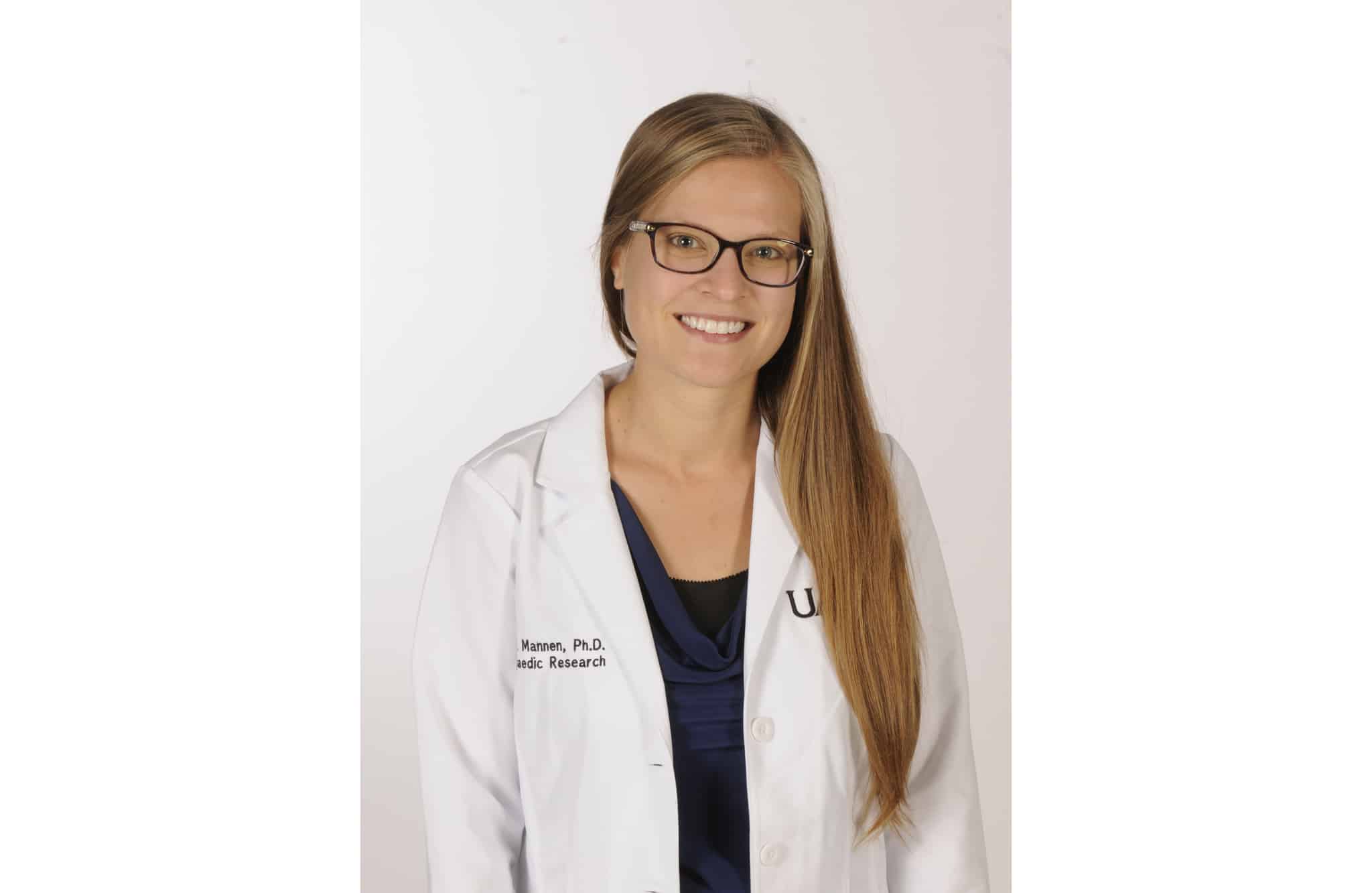Research into Baby Biomechanics Shows Issues with Infant Inclined Sleepers
| Groundbreaking research on inclined sleep products for infants by Erin Mannen, Ph.D., a baby biomechanics expert and mechanical engineer at the University of Arkansas for Medical Sciences (UAMS), was made public Wednesday as part of a U.S. Consumer Product Safety Commission investigation into their safety and related rulemaking.
“Over the course of a year-long study, we found evidence that babies age 2-6 months on average who were placed in inclined sleep products were at higher risk of suffocation in these products compared to a flat crib mattress,” Mannen said. “We found evidence that some of the deaths linked to these products occurred when babies who were placed on their backs to sleep rolled over — many for the first time — and were found dead on their stomachs.”
Mannen, who is an assistant professor in the Department of Orthopaedic Surgery in the UAMS College of Medicine, and a team of researchers from UAMS concluded that none of the inclined sleep products they examined as part of the study were safe for infant sleep. They further recommended that this category of products be removed from the market or that the industry rules outlining the standards for these products be significantly revised.
In detail, Mannen and her team suggested the angle of the incline on such products be no more than 10 degrees and that the lying surface be flat and rigid (rather than soft and plush-like).
Inclined sleepers are relatively new. The Consumer Product Safety Commission only began recognizing them as a product class in 2011, when they were separated from the regulations governing bassinets and cradles. They are currently defined as “a free standing product with an inclined sleep surface primarily intended and marketed to provide sleeping accommodations for an infant up to 5 months old or when the infant begins to roll over or pull up on sides, whichever comes first.” The appearance of the products varies, but they can look like hammocks or slings suspended on a frame, often with an incline of 10 to 30 degrees.
Mannen’s research became public as the Consumer Product Safety Commission considers changes to the regulations for this line of product.
Mannen and her team evaluated the products in several ways.
The researchers performed a biomechanical analysis with actual infants ranging from ages 2-6 months, comparing their muscle use and biomechanics in the products, both on their backs and on their stomachs, and at various inclines. This was compared to data on the same infants on a flat crib mattress under the same range of conditions.
They found that the babies who were placed on their stomachs in the sleepers or who rolled over had to exert many times more than the normal muscle strength to keep themselves upright and had to use muscles in a way that might be unfamiliar to them — as much as 200% more core strength than in a crib under the same conditions.
The team also conducted a review of several examples from the product class and found a wide variety of products are being marketed in this category. Many different designs and materials are in use.
They reviewed 91 incidents on a case-by-case basis, looking at police reports, caregiver interviews, autopsies and other data. They found that in many cases where an infant had been placed to sleep on their back in the sleeper and then rolled over and suffocated, the caregivers reported that they had not rolled over before and it was likely one of their first times to do so, if not the first time.
Additionally, the team monitored oxygen saturation levels of the babies over about one to two minutes in the inclined sleepers vs. a flat crib-like surface and found that even in such short time periods, there were twice as many incidents of a drop in oxygen levels in the inclined sleepers.
“We found evidence to suggest that this inclined position on a non-rigid surface may make it easier for babies to roll over, but harder for them to roll back,” Mannen said.
Co-investigators from UAMS on the study included John Carroll, M.D., pediatric pulmonologist; David B. Bumpass, M.D., pediatric spine surgeon; Brien Rabenhorst, M.D., pediatric orthopaedic surgeon; Brandi Whitaker, Ph.D., pediatric psychologist; Junsig Wang, Ph.D., biomechanics researcher; and Safeer F. Siddicky, Ph.D., biomechanics researcher.
UAMS is the state’s only health sciences university, with colleges of Medicine, Nursing, Pharmacy, Health Professions and Public Health; a graduate school; a hospital; a main campus in Little Rock; a Northwest Arkansas regional campus in Fayetteville; a statewide network of regional campuses; and eight institutes: the Winthrop P. Rockefeller Cancer Institute, Jackson T. Stephens Spine & Neurosciences Institute, Harvey & Bernice Jones Eye Institute, Psychiatric Research Institute, Donald W. Reynolds Institute on Aging, Translational Research Institute, Institute for Digital Health & Innovation and the Institute for Community Health Innovation. UAMS includes UAMS Health, a statewide health system that encompasses all of UAMS’ clinical enterprise. UAMS is the only adult Level 1 trauma center in the state. UAMS has 3,485 students, 915 medical residents and fellows, and seven dental residents. It is the state’s largest public employer with more than 11,000 employees, including 1,200 physicians who provide care to patients at UAMS, its regional campuses, Arkansas Children’s, the VA Medical Center and Baptist Health. Visit www.uams.edu or uamshealth.com. Find us on Facebook, X (formerly Twitter), YouTube or Instagram.###
